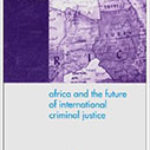Dying From Improvement: Inquests and Inquiries into Indigenous Deaths in Custody

Author: Sherene H. Razack
Publisher: Toronto: University of Toronto Press, 2015. 328p.
Reviewer: Jane Dickson | September 2016
In this recent text, Sherene Razack of the Ontario Institute for Studies in Education has undertaken a critical analysis of the role played by coroner’s inquests and inquiries into deaths of Indigenous people in custody, in reinforcing relations of colonialism. She focuses her analysis on the provinces of British Columbia, which has possibly the most egregious record with regard to its historical treatment of Indigenous peoples, land and human rights in Canada; and Saskatchewan, which has one of the highest and most consistently disadvantaged Indigenous populations in the country, as well as shockingly high rates of Indigenous incarceration.
Over six chapters, an introduction and conclusion, Razack takes the reader though the deaths of Indigenous men and women in B.C. and Saskatchewan in police custody, jails and prisons. In British Columbia, she leads us through investigations into the deaths of Paul Frank, Paul Alphonse and Anthany Davies whilst in police custody, contextualizing these within the larger context of loss of Indigenous life to suicide and despair in the province’s police and justice systems. From here, she shifts her gaze to Saskatchewan, concentrating her analysis on the Wright Inquiry into the Saskatoon Police Service’s practice of “Starlight tours,” in which police drove Indigenous people in their custody to the far reaches of Saskatoon, confiscated their coats and shoes in the frigid winter temperatures, and abandoned them. This now-notorious practice was revealed as central to the freezing deaths of Neil Stonechild, Darryl Knight, Rodney Naistus and Lawrence Wenger, and many have caused considerable, non-lethal harm to many others.
Drawing upon critical race and legal scholarship, Razack dissects Indigenous deaths in custody and the resulting inquests and inquiries, arguing that these investigations consistently shifted their focus away from the “systematized inhumanity” and wrongdoing by police and others, preferring to concentrate on the complicity of the deceased in their own deaths. This deflection is inevitable, she believes, and results from the entrenchment of inquiry players and processes within ongoing relations of colonialism, settler privilege and the persistent racism which inform these. Almost without exception, Razack deconstructs the inquests and inquiries as processes wherein responsibility for Indigenous deaths was divided along lines of race and culture: predominantly white Police, first-responders and medical personnel are consistently portrayed within the inquiries as benevolent but insensitive helpers, or people at wits’ end in dealing with an addicted, debauched and dying Indigenous population whose poor choices and lifestyles are directly implicated in their deaths. Culpability, Razack tells us, is determined not by a focus on what is wrong with the system or settler society, but rather in terms of what is wrong with Indigenous people who die whilst caught up in the system or by the hand of settler “failure to care.” The inquests and inquiries dedicate little to no attention to the larger historical processes which have encouraged trauma, addictions and despair amongst Indigenous people, nor is there any indication that the settlers who animate the inquests and inquiries avert to the importance of those processes in sustaining their privilege. Razack tells us that “inquests for the most part consider the death of Indigenous people as timely rather than untimely. The story of timely death gains coherence through representations of Indigenous people as possessing a pathological frailty that is more often than not associated with alcohol abuse. If Indigenous people are a dying race of chronic alcoholics, then they are people that no one can really harm or repair.” In this way Razack implicates inquests and inquiries not only as partial and myopic portrayals of Indigenous life and death, but also as important rituals reinforcing existing relations of colonialism and the “ongoing white supremacist colonial project” that is Canada. By failing to place Indigenous deaths in custody within larger historical and current realities of racism, ongoing colonialism and settler privilege, inquests and inquiries amount to little more than opportunities for settlers to appear “understanding” and “benevolent” toward Indigenous populations whilst obscuring their responsibility for Indigenous deaths, which are a routine and necessary part of the ongoing colonial endeavor.
If the inquests and inquiries failed so utterly in their processes, they offered no better result in their outcomes. Razack tells us that almost without exception these investigations lead to impoverished conclusions and recommendations that, while they may chastise select settlers and aspects of state practices, nonetheless vindicate the system and the settler state. The inquest and inquiry reports appear to conclude with direction to improve policies and inefficiencies in dealing with “damaged populations” and to provide police, first-responders and medical personnel with greater “cultural awareness” education. Thus in the recommendations, as in the bodies of the reports, the focus is not on colonial relationships or settler privilege, but is instead on limited tinkering with the systems that reinforce these and on “cultural difference” as the heart of the problem. The focus on culture and cultural difference is crucial: in a world dominated and defined by settlers, it is Indigenous people who are deemed as the culturally different, and thus constituting the central problem.
Razack’s arguments are provocative. She has constructed a compelling and disturbing analysis which will challenge readers on many levels, and force them to confront questions about Indigenous-settler relationships as well as the role of law and “killing indifference” in reducing the importance of Indigenous lives and entrenching settler privilege. It is impossible not to be moved by the evidence and analysis, and what these say about contemporary Indigenous life and death in Canada.
Although I believe the book has many strengths, I should mention a few issues which did trouble me. First, I think the book would have benefited from a more fully-elaborated statement of the methodology. It is not really clear, for example, why she chose to focus only on BC and Saskatchewan, both quite notorious locations given her subject-matter, or where these provinces fit in the larger Canadian landscape with regard to Indigenous life, death and the larger patterns of state control and surveillance which shape that landscape. There is no statement of how she gathered her primary documents, or what manner of systematic method informed the research and interviews. As such, important lessons about the conduct of research are absent and students in particular will be unable to benefit from Razack’s accumulated wisdom and experience in research and its methods.
In like fashion, I think her analysis would also have benefited had she provided readers with definitions of key terms at the outset, so that we may be clear, for example, about what we mean when we speak of things like “racism”, “privilege” and “gender”. Students in particular benefit from exposure to the challenges presented by language, and all readers benefit from a clear understanding of the method and terminology used in research and commentary, which is crucial to ensuring full comprehension of the researcher’s findings and conclusions. This is especially so in researches which focus on “racism”, “privilege” and “gender”, which are deeply complex concepts and ones which cut across all places in our world, and often cut more than one way. While these concerns about methodology and definitions may seem like unimportant distractions given the pressing significance of Razack’s subject matter, the simple fact of the matter is that those of us who would challenge the very unsatisfactory status quo must be transparent and scrupulous in our methods and approach, or we permit vested interests to dismiss our message by attacking the medium of its delivery. The Left has always had to be better prepared than the Right, and it doesn’t seem to me that this is any less true now than in the past.
While I found her thoughts on the “relations of colonialism” to be interesting and provocative, I was curious that her discussion of this concept did not include consideration of additional concepts now generally accepted as relevant in understanding those relations, their impacts for Indigenous peoples, and their treatment within society, namely Historic Trauma, Historic Trauma Responses and Intergenerational Effects. It may be that this gap was intentional, and reflects concerns that such concepts feed into the ‘problematic of culture’ which emerges in inquests and inquiries to the benefit of settler society. However, the gap is noticeable and requires mention. It is not enough to demand readers avert to the evils of settler society, there must be some effort to educate them about what those many evils have meant for Indigenous people. Razack argues that to “focus on the colonial is to place emphasis on the history of the relationship between Indigenous people and the state, a history of forced removals, camps, reserves, residential schools and punishment” – and HT, HTR and IE are crucial elements of that relationship and go some way to educating those who practice inhumanity both systematically and individually, about the implications of that inhumanity, both past and present.
Finally, it would have added much power to this important book had we heard more from Razack in her conclusion, specifically with regard to her prescription for addressing the many problems she has diagnosed. The book offers us a consistent indictment of inquests and inquiries for their myopic, racist approaches and neutered, repetitive recommendations for change (most of which are never implemented), and passionate indictments of settler states, persistent colonialism, and racism restated as “systematized inhumanity”. Yet in the end, we receive roughly three pages of Razack’s insights for pushing back on these things, which appear to be limited to an endorsement of greater “anti-colonial education”. While this would undoubtedly be a good thing, as a conclusion to her analysis it is a bit of a let-down. It is also a tad problematic, given her rightful evisceration of inquests and inquiries for recommending education in the form of “cultural awareness” or “sensitivity” training as the sop for internal and institutionalized racism. While education – whether anti-colonial or other – is surely an important piece in the ongoing struggle against colonialism and racism, it is only one piece. As such, the focus on anti-colonial education seems an adequate, but surely not sufficient conclusion to her analysis, and it leaves us wishing Razack had shared more of her considerable insights for overcoming the many compelling challenges she details in her book.
Jane Dickson, PhD(Law), is Associate Professor, Department of Law & Legal Studies, Carleton University, Ottawa, Ontario.


